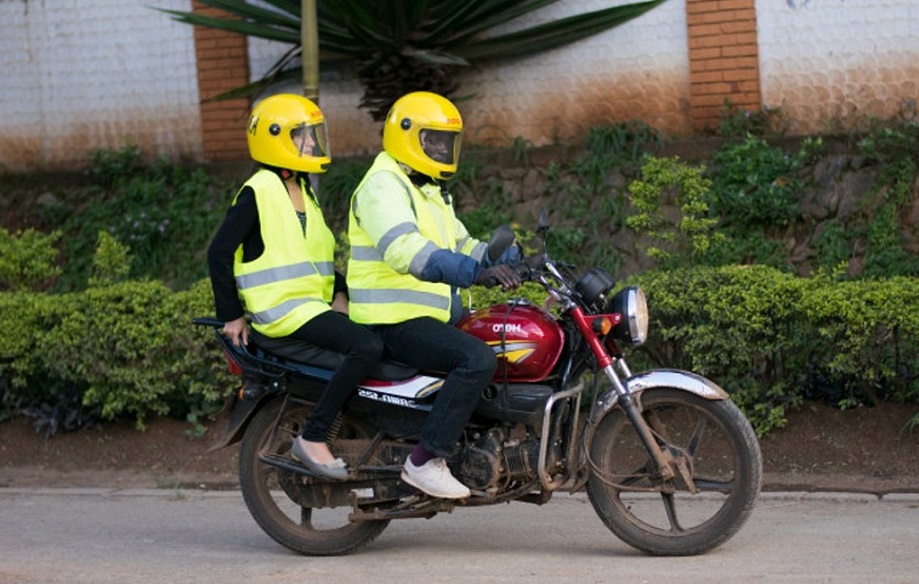A new report by the Kenyan National Helmet Wearing Coalition has emphasized the pivotal role of helmets testing and awareness in curbing motorcycle deaths.
The report made note of the rising role of motorcycles in Kenya’s economy but added that it was coming at a cost too high hence the need for helmets testing and awareness noting that registered motorcycles have risen to 2.2 million in Kenya, making 22 million journeys, with fares totaling US$100 million being made daily. The personal and economic cost, however, is high, and motorcycle users made up 35% of all Kenyan road deaths in 2023 (NPS, 2024), with low helmet prevalence and quality being a major issue.
The Director General of Kenya’s National Transport Safety Authority, NTSA, Mr. George Njao bemoaned the sad high personal costs associated with the fast-rising motorcycle industry while also making a case for better helmets awareness and use.
“In Kenya trauma in form of musculoskeletal and head injuries are most common injuries because of motorcycle related crashes. Motor cyclists are particularly vulnerable because they have limited protective equipment that could prevent major traumas in the event of a crash. Despite the burden of the problem, the vice has not received adequate attention due to unavailability of local reliable data. Based on the report being released today it is evident that riders face significant risks due to the absence of appropriate helmets. We require helmets that meet international standards, and we will work together with all relevant stakeholders to ensure the safety of our motorcyclists. We welcome these findings, and it will go a long way in supporting the Government in coming up with evidence-based interventions including the establishment of helmet testing centers.” Mr Njao observed.
According to the report, the setting up of a helmet testing facility to strengthen the enforcement of the Kenyan helmet standard is at the center of the bid to arrest motorcycle deaths and merits support. The report further noted that:
- Just 15% of pillion passengers and 63% of riders in Nairobi wear helmets;
- Head injuries make up over a third of treated motorcycle injuries;
- The mean hospital stay for a motorcycle crash victim is 18 days, and 28% spend more than three weeks in hospital.
- Hospital costs for motorcycle crashes can be up to 4.5 times the annual salary of boda boda riders.
High-risk roads in Nairobi saw just 63% of boda boda drivers and 15% of pillion passengers wearing helmets. Research has shown that a motorcycle helmet can reduce the risk of death by 42 per cent and the risk of head injury by 69 per cent in a crash (UNECE, 2016). Head injuries are the leading cause of hospital admission and make up more than one-third of all injuries (35%), according to the analysis of hospital records from two hospitals in Nairobi.
Almost 1,000 individuals were treated for motorcycle crash injuries in just an 18-month period, where the mean stay was 18 days, and 28% of patients stayed more than three weeks. Most victims aged below 35, with boda boda drivers (62%) more frequently injured than pillion passengers. Six per cent of patients died during treatment. However, roadside deaths are not recorded by hospitals, and wider data is limited.
According to the report, most boda boda drivers reported wearing helmets but had a mixed understanding of helmet safety and the role of helmet standards. Only 14% of drivers were confident that they were wearing quality helmets. Compliance on helmets wearing was mainly focused on enforcement rather than personal safety, further urging the need for a road awareness campaign.
The report identifies a lack of public awareness around helmet safety and standards and leads to a series of recommendations to rectify the scenario. These are:
- Strengthen data collection, which is a significant constraint to determining the scale of the current problem;
- Greater awareness around helmet safety;
- More financial and political investment towards prioritizing helmet compliance and
- The establishment of a helmet testing laboratory, the first in East Africa, to address substandard helmets which fail to protect drivers from serious injury.
Dr Gladys Nyachieo, the report’s principal investigator took note of the monstrous medical cots associated with motorcycle accidents and advocated for preventative methods.
“Medical costs from motorcycle crash injuries have adverse effects on the lives of those affected and the community at large in the short- and the long-term. There is a need for more enforcement of existing legislation and helmet standards for safety for pillion and operators. Let all stakeholders commit to creating safer roads and safer helmets for all users. This report is clear on the suffering and disruptions that occur due to effects of motorcycle crashes.” She noted.


